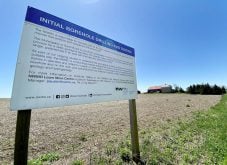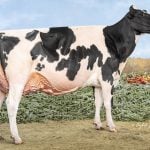Oxford County’s waste management agricultural plastics diversion program is getting a lot of buy-in from producers.
“The initial response was very positive,” said Frank Gross, transportation and waste management manager. “We haven’t seen a lot of material come in yet, but some farmers did indicate later in the year they expect to bring in the material as they accumulate it and fill up the bags.”
Provincially, the agriculture sector generates 35,000 tonnes of plastic waste, which often ends up in landfills or being burned on-farm due to limited recycling options. Oxford County alone can potentially divert 300 tonnes of material from the landfill.
Read Also

Defence investments could benefit agriculture
A bump in Canada’s NATO spending commitments could lead to infrastructure investments that would benefit rural areas
Why it matters: There is a market for repurposed plastic ag-waste but limited opportunity to collect, process and deliver useable material to processors that can convert it into new products.
Gross said approximately 15 Oxford producers requested bags to be sent to them while a handful of others picked them up at the management facility. The supplied bags can be filled with plastic waste.
The producer is responsible for ensuring silage bags, bunker covers, bale wraps, fertilizer and salt bags are cleaned and sorted appropriately into the bags, which hold approximately 90 kilograms of material, before returning them to the facility.
“Once we’ve accumulated enough material, we’ll ship it bulk to Switch Energy Corp.,” said Gross. “They process it and then ship it to an end market where the material is used in the manufacturing of new products like composite lumber and other stretch plastic-type materials like garbage bags, for example.”
Producers pay a $50 per tonne shipping fee, and a county tax levy offsets the balance of the cost, so the program is only open to Oxford County residents.
Gross said they could expand the range of what’s acceptable now that Switch Energy has begun recycling baler twine, super sacks and woven feed bags.
Switch Energy operates Ontario’s largest agricultural polyethylene waste collection program and converts it into high-value products.
Bruce County launched a pilot project with Cleanfarms to collect baler twine, bale wrap, silage plastic and bunker covers. Cleanfarms is working to establish collection points for unwanted pesticide and livestock or animal medication in fall 2025.
Cleanfarms also works with entrepreneurs like Lynn Leavitt of Leavitt’s Black Angus Beef in Prince Edward County. He created his own environmentally friendly on-farm disposal solution for clean, dry plastic wrap and twine by developing the Pac-It compaction system and U-Pak AgriServices business.
Farmers can compact farm-based plastics and twine in a tall, rectangular slatted box and deliver to Leavitt for processing.
As of early 2023, U-Pak AgriServices has diverted approximately 250,000 pounds of scrap plastic wrap and bale twine from landfills since its inception.
Research is ongoing to develop a “holy-bale” biodegradable plant-based hay wrap alternative. Erica Pensini, of the University of Guelph’s College of Engineering and Physical Sciences, and colleague Alejandro Marangoni, an Ontario Agricultural College food science professor, are working on the project.
They ran field trials for plant-protein-based spray-on and prefabricated silage films with the help of local farmers and, in 2022, turned their sights on creating a similar product to replace low-density polyethylene plastic bale wrap.
OMAFRA, Livestock Research Innovation Corp., Beef Farmers of Ontario, Dairy Farmers of Ontario, and Ontario Agri-food Innovation Alliance supported the project.
In a 2022 U of G statement, Pensini said working directly with farmers is essential for testing the biomaterial’s strength and durability, identifying issues, and ensuring the new sprays and wraps integrate into existing machinery and systems.















